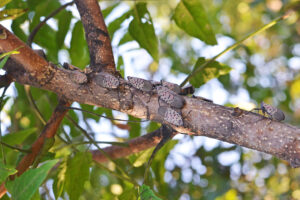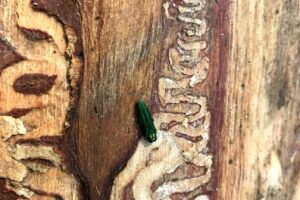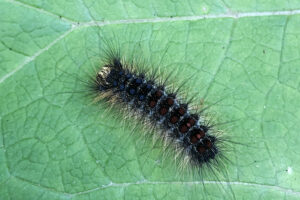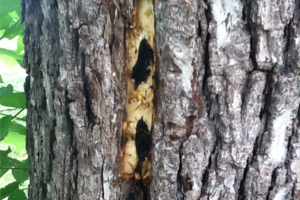- Spotted Lanternfly
- Emerald Ash Borer
- Spongy Moth
- Thousand Cankers Disease
Role in Forest Health
One aspect of forest health is the reduction of losses due to pest organisms, primarily insects and diseases. Many native and non-native insects and diseases can affect the native tree species in Virginia forests. Native insects and diseases can be an important part of the ecosystem, helping with nutrient recycling, acting as a food to source to other animals, and contributing to biodiversity. However, when these native pests reach high populations and outbreaks start, or when non-native pests enter our native ecosystems, trees can be negatively impacted.
Insects can be classified by how they damage the trees: wood borers bore into trees, defoliators eat leaves, and sapsuckers feed on the sap of trees. Diseases are also classified by parts of the tree they impact: root issues, foliage disorders, and wilts (which block the tissue that moves water and nutrients).
While many resources exist for identification and management descriptions, here are some resources the VDOF Forest Health Program recommends.
To learn more about common insects, diseases, and abiotic disturbances in your trees, visit the Tree and Forest Health Guide!
Common Insects and Diseases in Virginia
- Emerald Ash Borer
- Hemlock Woolly Adelgid
- Laurel Wilt
- Oak Decline
- Southern Pine Beetle
- Spongy Moth
- Spotted Lanternfly
- Thousand Cankers Disease
Additional Resources
- Learn more about many forest health disturbances in the Southeastern US at the Southern Research Extension Forestry Forest Health Website.
- Virginia Cooperative Extension offers great factsheets on numerous forestry issues.
- Get help with sick trees
Contact Us
For more information or questions, e-mail us or use our contact form.




